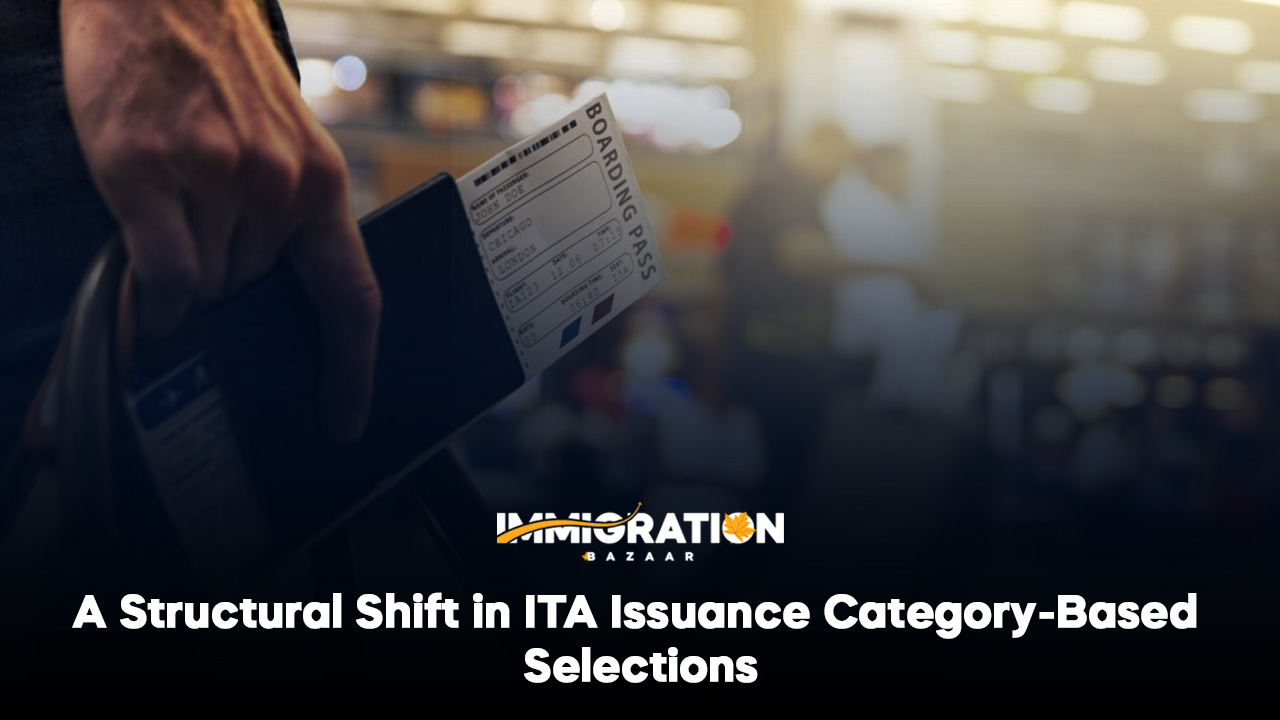Canada’s Express Entry system has witnessed a striking increase in the issuance of Invitations to Apply (ITAs) in 2024 compared to 2023. This year’s ITA count has indeed more than doubled, reflecting Canada’s focused commitment to expanding its labor force and filling critical industry roles through targeted immigration policies. As of September 2024, Canada issued approximately 84,874 ITAs, surpassing the 81,948 issued by the same point in 2023, with the full-year target set at 110,000 new permanent residents under Express Entry, up from 82,880 in 2023(ImmigToronto)(Cdn Lifestyle Magazine).
This ambitious increase aligns with Canada’s dual goal of economic rejuvenation and addressing labor market demands, which have been heightened by an aging workforce and sector-specific shortages. To achieve these targets, Canada has adopted new category-based selection criteria in its Express Entry system, with draws specifically designed to prioritize applicants with skills in fields like healthcare, technology, trades, and French-speaking candidates, among others(ImmigToronto)(Cdn Lifestyle Magazine).
In 2023, Canada conducted 28 Express Entry draws by September, covering a wide range of occupations through general draws. These draws predominantly invited candidates through programs like the Canadian Experience Class (CEC), the Federal Skilled Worker Program (FSWP), and the Federal Skilled Trades Program (FSTP). However, in 2024, Canada introduced 37 draws by September, focusing on targeted categories to align with immediate and long-term labor market needs. This marks a departure from previous selection methods and has resulted in more streamlined, sector-specific draws that are more aligned with Canada’s economic and demographic priorities(ImmigToronto)(CIC News).
Category-based draws were strategically introduced to emphasize applicants’ work experience and language skills, crucial to sectors like healthcare, science, technology, engineering, and mathematics (STEM), skilled trades, and agriculture. For instance, healthcare occupations received focused attention in several draws, aiming to address Canada’s healthcare worker shortage, which was further intensified by the COVID-19 pandemic. The inclusion of French language proficiency categories and draws for transport and STEM occupations also speaks to the government’s attempt to balance linguistic diversity and fill technology and logistics-related roles(Cdn Lifestyle Magazine)(CIC News).
Key Sector-Specific and Domestic-Oriented Draws
Among the categories, ITAs issued to healthcare workers, tradespeople, and those in STEM fields mark notable increases. Healthcare, in particular, saw significant boosts, with draws issuing ITAs to thousands of candidates possessing critical skills that Canada needs to maintain and enhance its healthcare services. The sector-specific targeting reflects Canada’s understanding of global competition for healthcare talent and the importance of securing trained professionals in essential sectors.
Further, Canada reintroduced the Canadian Experience Class (CEC) draws, a category absent from the 2023 Express Entry rounds, targeting skilled immigrants who are already in Canada, such as international students and temporary foreign workers. By September 2024, approximately 24,800 ITAs had been issued under CEC, reinforcing the emphasis on retaining skilled talent already integrated into the Canadian labor market(Cdn Lifestyle Magazine).
Increased Provincial Nominee Program (PNP) Focus
The Provincial Nominee Program (PNP), a key component of Canada’s broader immigration strategy, has also seen higher activity in 2024. The PNP allows provinces to nominate skilled individuals tailored to their economic needs, making it an efficient tool for addressing local shortages. In 2024, there have already been eight PNP draws compared to four during the same period in 2023, highlighting an intensified provincial effort to attract skilled professionals in line with regional demands(Cdn Lifestyle Magazine).
Broader Implications: Canada’s Demographic and Economic Goals
The surge in ITAs in 2024 through category-specific draws reflects Canada’s long-term strategy to mitigate demographic challenges, particularly as the nation’s aging population begins to retire from the workforce. Canada’s labor force growth has slowed, and immigration is projected to play an increasingly vital role in sustaining the workforce. According to estimates, by 2030, nearly a quarter of Canada’s population will be 65 or older, driving an urgent need to replenish the labor pool through skilled immigrants who can contribute to various high-demand sectors.
By prioritizing occupations in shortage, the category-based system aligns more closely with specific labor needs, effectively helping Canada avoid critical service and productivity gaps in key sectors. This strategy not only builds a more sustainable workforce but also bolsters the country’s economic growth by providing businesses with the skilled labor they need to thrive, thus making Canada a more attractive destination for global talent(Cdn Lifestyle Magazine).
A Comparison with Previous Years and Broader Future Goals
In past years, Express Entry draws operated largely on a general basis, focusing more on overall Comprehensive Ranking System (CRS) scores rather than industry-specific demands. While this helped build a versatile labor force, the COVID-19 pandemic highlighted gaps in crucial sectors, prompting Canada to adjust its approach. With the introduction of category-based draws in 2024, Canada’s immigration strategy is evolving into a more targeted, agile system that better responds to real-time labor market needs. These changes also reflect feedback from various stakeholders, including provincial governments and settlement service providers, who play an active role in integrating immigrants into the workforce.
Looking ahead, Canada’s Immigration Levels Plan (2024-2026) projects further expansion of Express Entry targets, expecting to admit 500,000 new immigrants annually by 2025, with a significant portion entering through the Express Entry system. As category-based draws continue to evolve, Canada may introduce additional specialized categories based on labor market analyses, maintaining a responsive system that adjusts to the shifting demands of the economy(CIC News).
Concluding Thoughts
The 2024 surge in ITAs issued through Express Entry is a testament to Canada’s commitment to a robust immigration strategy aligned with economic and social priorities. The move towards category-based selections, along with the increase in PNP and CEC-focused draws, underlines a sophisticated approach designed to mitigate labor shortages, diversify linguistic and cultural representation, and bolster Canada’s long-term economic growth. The changes reflect Canada’s recognition that effective immigration policy is critical for addressing its demographic challenges and maintaining global competitiveness in attracting skilled talent.
Canada’s immigration trends point towards a future where category-specific targeting becomes increasingly nuanced, potentially shaping the labor market for years to come. As new strategies emerge, Canada is positioning itself to not only meet current demands but also to preemptively address economic challenges, making immigration a pivotal factor in the country’s social and economic fabric.







